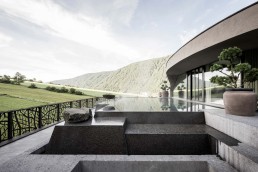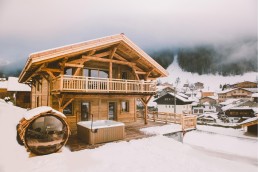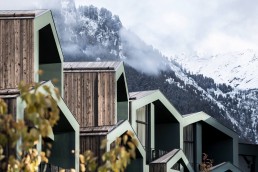Noa* renovates South Tyrol’s Hotel Silena
Network of Architecture (Noa*) has spearheaded the transformation of Hotel Silena in Italy’s South Tyrol region, enriching the structure with a new entrance, six new suites and an adults’ wellness area.
In 2017, the family that owns Hotel Selina decided to make an architectural change. It was during a long trip through Asia that they developed a passion for the customs and rituals observed along their journey, and which they chose to integrate as central elements of the hotel design and concept. It was therefore obvious to Noa* to incorporate classic elements and ambiances associated with the Asian world even more so than in the initial intervention. The entire concept of the interior draws on this imagery, both in terms of material and colour composition.
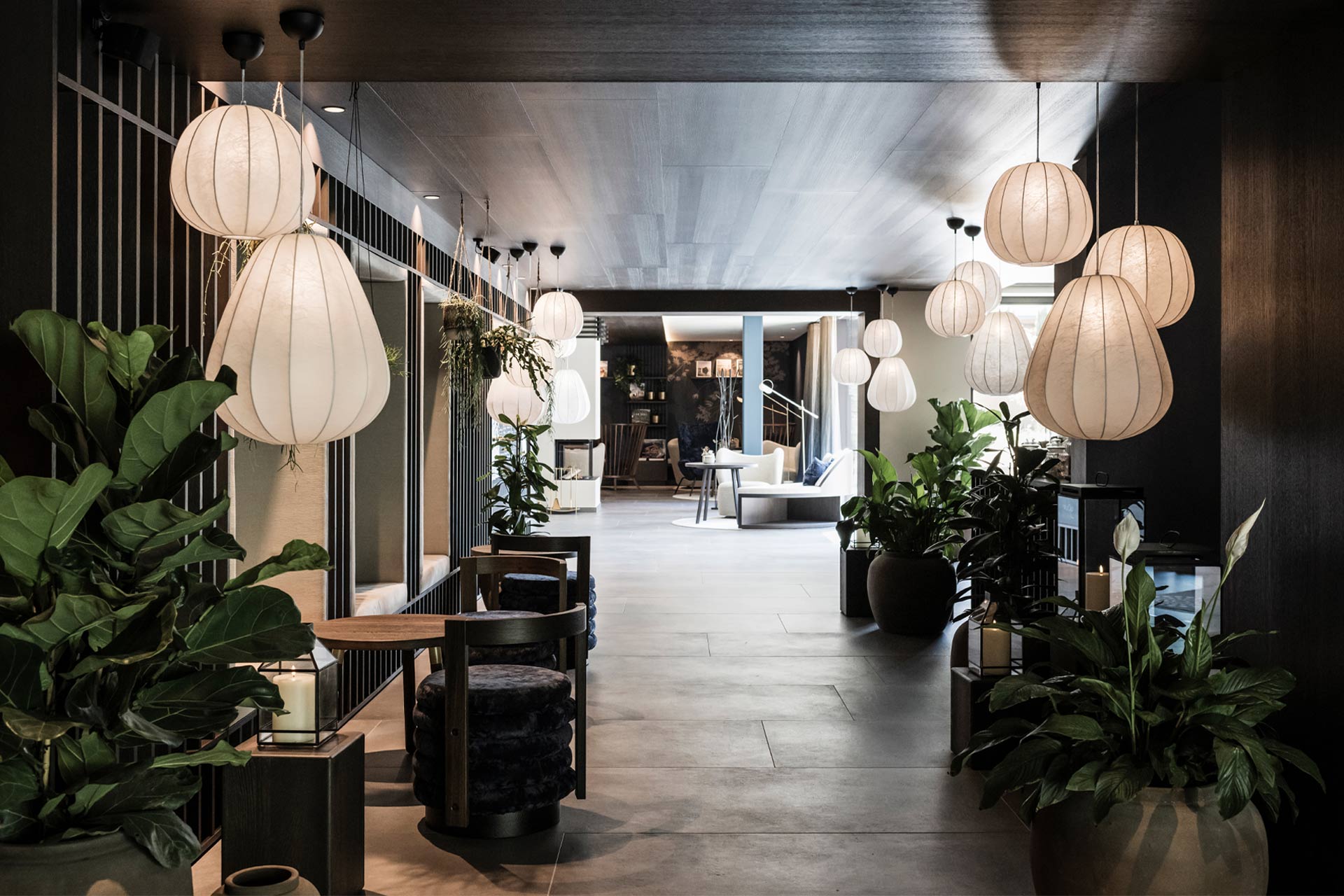
This notion begins in the newly designed entrance, where guests pass through a round wooden portal crafted according to an Asian technique that captures the purity of traditional woodworking. The piece is simply constructed of horizontal and vertical trusses, interlocked to one another at the joints. To place further importance on the welcome, the walls of the entryway have been painted black using a rough trowel technique with mineral finish; thus transforming the entrance into a tunnel and intensifying the passage.
Particular emphasis has also been placed on the moment of arrival at Hotel Selina. Visitors are welcomed into an open space, and the eye is free to meander along the axis that stretches from the northern entrance toward the indoor garden to the south. The stone fountain, a newly designed fireplace area and cosy seating alcoves damper the rigidity of a classic check-in. This intention is emphasised by the placement of the reception desk to the side.
Echoes of Asia are subtle yet omnipresent and reveal themselves in the form of dark wood paired with shades of blue and grey, delicate pine bonsai trees in ceramic pottery, vertical boulders of local stone, and discrete lantern-shaped lights. An entire wall is also dedicated to Tibetan prayer wheels; wooden cylinders that with the touch of a passer-by’s hand are set into a perpetual spin. Like an annex to this scenery lies the classic Tyrolean stube – the very heart of the original Moarhof – its history, rustic style and original wood are further highlighted by its direct proximity to the new bar area featuring minimalist tea ceremony platforms.
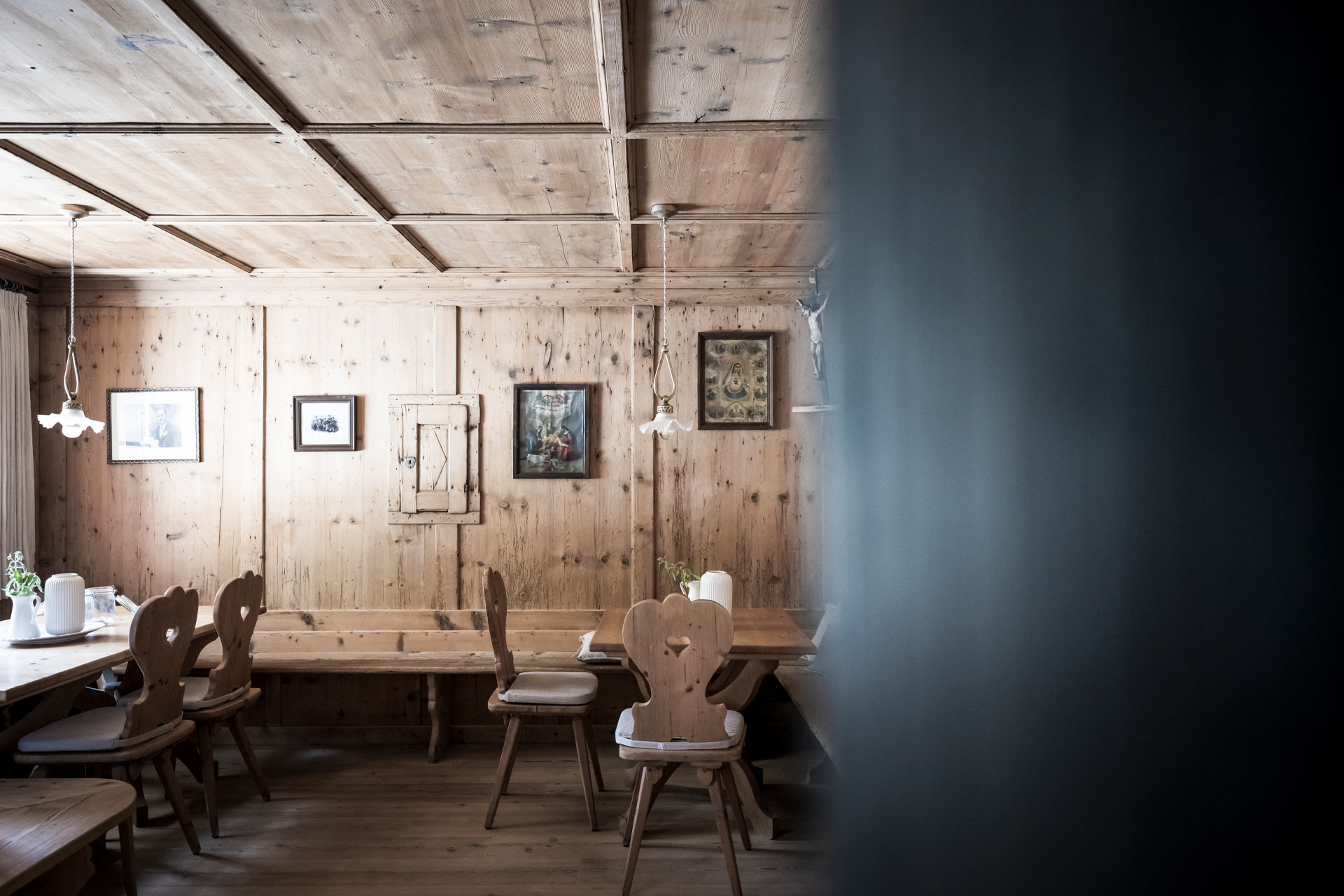
“The stube and tearoom are separated from one another by a mere thin door frame: they seem to make the transition between origins and future of Silena visible.” – Christian Rottensteiner, Project Lead Architect at Noa*
Dark oak acts as a reference material and fil rouge throughout Hotel Selina. The surrounding bog landscape that gave the original farmhouse its name – Moar means “marsh” in local dialect – permeates throughout and is echoed in its colours and materials. All custom furniture was made using oak, and it is oak that is used for the floors of the hotel’s six new suites. Despite belonging to three distinct categories with dimensions and furnishings that subtly vary between them, all the suites are bound together by a unifying room design.
A powerful sense of connection to the ground is present in every suite, with individual areas delimited by the podiums they each sit on, such as the bed, the meditation corner and the ceremonial tea table, which can be lowered into the floor and out of sight. This arrangement draws on the Japanese tradition of creating small, well-defined spaces. The Asian room theme continues out onto the individual terraces, conceived as outdoor rooms; each features a small outdoor garden equipped with a bathtub, small flower beds and curtains, evoking symbolic elements of the culture’s rich origins.
The 30-55m2 suites are characterised by an alluring interplay of light and shadow, of visibility and intimacy. The geometrically patterned wooden room partitions contribute significantly to this, perpetuating the lively play of light that enters through the patterned aluminium panels of the façade. The separation between the sleeping area and bathroom is intriguing and even illusory at times; inspired by Japanese rice paper walls, Noa* created a partition composed partly of opaque glass panels, partly semi-transparent glass, and in some places of open panels, to maintain a relationship between the two spaces and evoke flow in the ambiance.
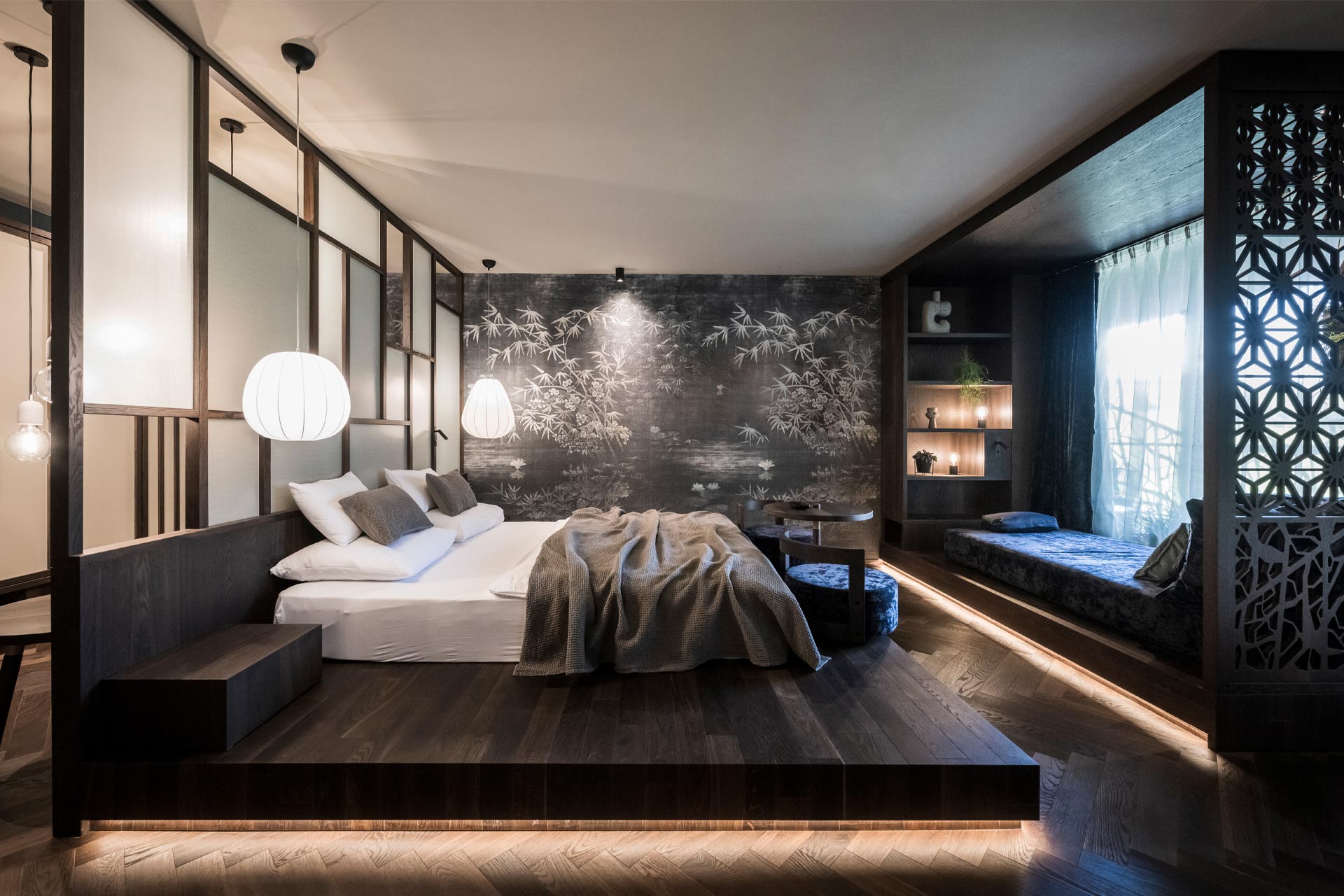
“Everything is connected to that which touches the ground: the bed, the tea ceremony platform, the meditation corner – there is always a podium situation that shifts the centre of gravity downward when standing inside the room. So guests remain firmly rooted to the ground.” – Rottensteiner
Two ceramic, tulip-silhouetted sinks are also reflected in the vanity’s glass countertop and underlaid wallpaper. While the vanity is located away from the window in the bathroom, the shower is positioned right up against the window, favouring a direct relationship with the open air. The building’s façade ensures privacy, transforming the terraces into a semi-private space.
In the new wellness area on the top floor, Noa* has designed a retreat zone inspired by Japanese Onsen springs. Here, there is a relaxation area, showers for traditional purification rituals and an open-air pool maintained at a constant 40 degrees. The pool’s design, with exposed black concrete steps reminiscent of volcanic stone, creates a striking, textured mise-en-scène. The water that flows over the infinity edge and ripples across the rough concrete surface creates unforeseen reflections and becomes part of the ubiquitous meditative ceremony.
CREDITS
Photographer: © Alex Filz
Related Posts
16 November 2022
